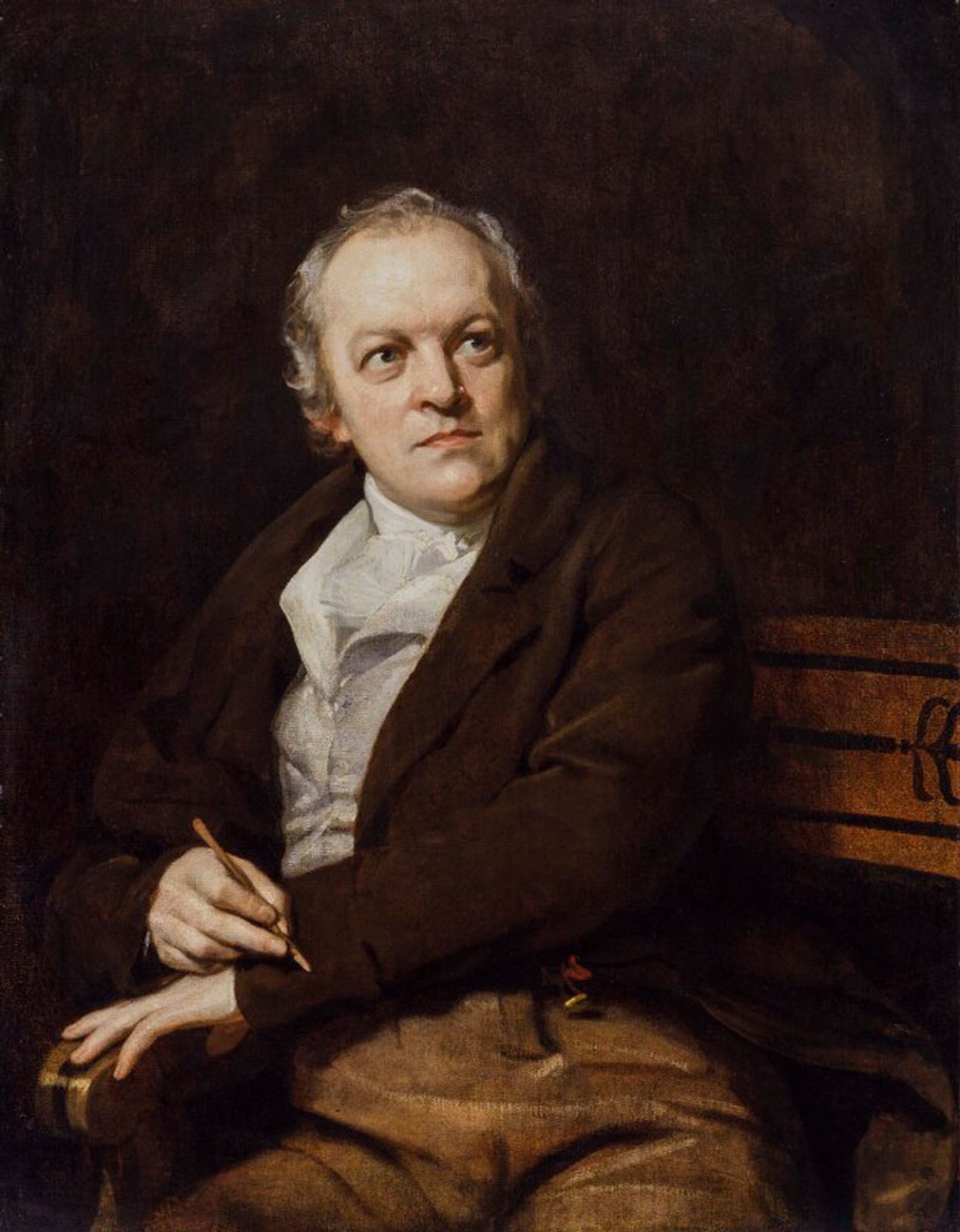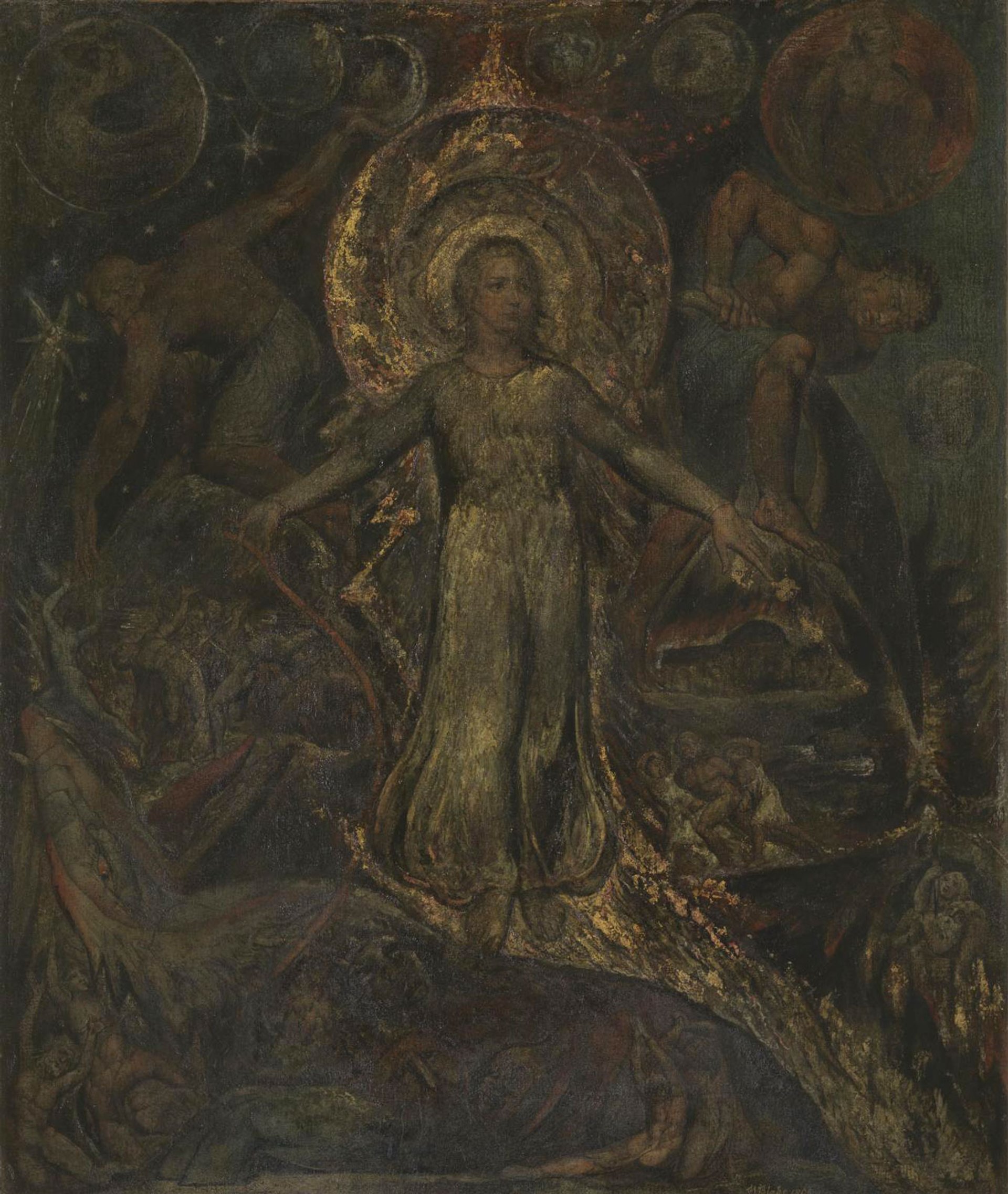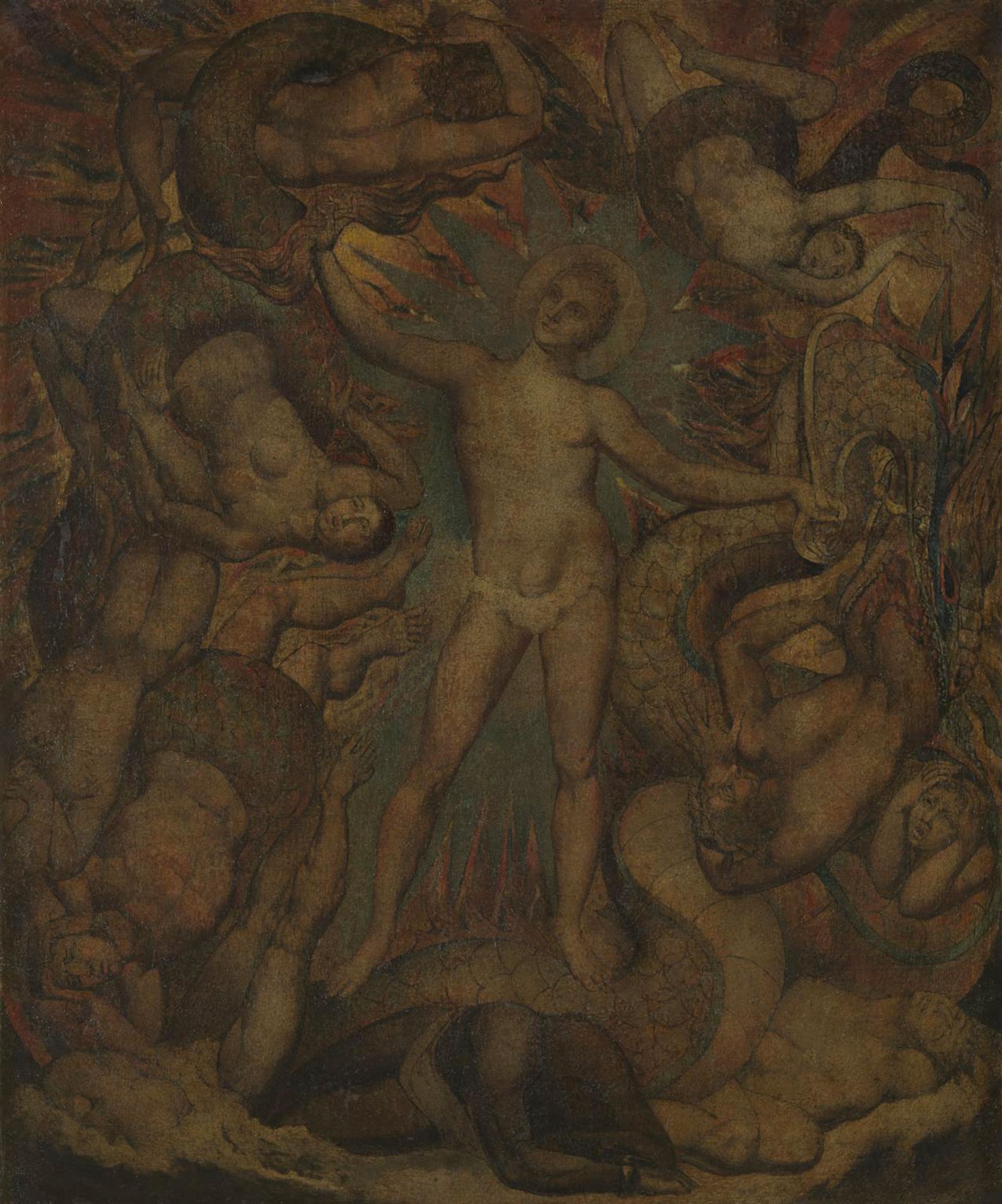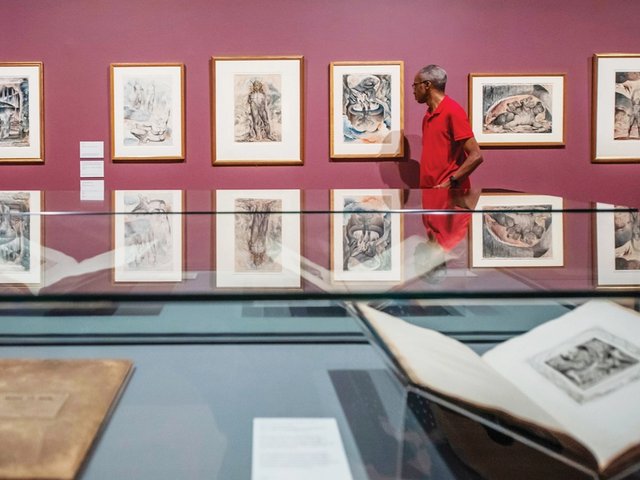The 18th-century artist, author and rebel William Blake has inspired contemporary artists, musicians and poets—shaping politics, sex, religion, society and art today—but his work was largely ignored during his own lifetime. In a new publication, William Blake vs The World, the writer and cultural historian John Higgs explores why Blake, who said he regularly saw God, angels and demons in beatific visions, has endured.
Today, Blake exhibitions are critically acclaimed and generally well attended. But when Blake mounted a show of 13 works in 1809, it proved to be one of the most famous flops in British art history, attracting hardly any visitors and no buyers. The public was put off by the lowly setting of Broad Street, by the absurdly high prices Blake insisted on charging, and by the eccentricity of Blake’s art. Higgs describes this bruising experience below, relaying how one critic slammed Blake’s art along with the mysterious disappearance of the artist’s largest ever work.

William Blake (1807) by Thomas Phillips © National Portrait Gallery, London
Extract from William Blake vs The World:
As Blake saw it, never had some paintings in a room above a haberdashery shop been of such heightened national and spiritual importance. Yet this dramatic advert [a leaflet printed to promote the show] did not convince the London public. There were scarcely any visitors and, despite the exhibition being kept open for a couple of months after the intended closing date, none of the pictures sold. The exhibition received only one review, in the 17 September 1809 edition of The Examiner. It began: “If beside the stupid and mad-brained political project of their rulers, the sane part of the people of England required fresh proof of the alarming increase of the effects of insanity, they will be too well convinced from its having lately spread into the hitherto sober region of Art.”
The article’s author, Robert Hunt, states his concern that praise for Blake’s work from his few well-known and respected friends had led him to mistake his madness for genius, an error that Hunt felt duty-bound to correct. He writes, “Such is the case with the productions and admirers of WILLIAM BLAKE, an unfortunate lunatic, whose personal inoffensiveness secures him from confinement, and, consequently, of whom no public notice would have been taken[.]”
“The poor man fancies himself a great master”ROBERT HUNT, CRITIC
For the rest of the article Hunt delights in being vicious, patronising and cruel. He seems intent on putting this working- class creator in his place. It is hard not to see him as one of the uninspired “Hirelings in the Camp, the Court, & the University” that Blake attacks in the preface to Milton. “The poor man fancies himself a great master”, Hunt wrote, “and has painted a few wretched pictures, some of which are unintelligible allegory, others an attempt at sober character by caricature representation, and the whole ‘blotted and blurred,’ and very badly drawn. These he calls an Exhibition, of which he has published a Catalogue, or rather a farrago of nonsense, unintelligibleness, and egregious vanity, the wild effusions of a distempered brain.”

William Blake's The Spiritual Form of Pitt Guiding Behemoth (around 1805) cc Tate collection
Just as Decca Records’s A&R man Mike Smith is forever remembered as the man who turned down the Beatles, so too is Robert Hunt now only remembered as the critic unable to appreciate the work of William Blake. Given the cruel tone of his review, it is hard to feel bad about this. But it is also fair to say that there would not have been many disinterested observers who, after reading Blake’s words and visiting the exhibition, would have come away thinking the artist was sane.
Of the few visitors, one was Henry Crabb Robinson, who would meet Blake at a dinner party sixteen years later and write in his diary: “Shall I call him Artist or Genius-or Mystic-or Madman?” Robinson paid the one shilling entry fee to James Blake, William’s older brother, who escorted him to the upstairs room to see the exhibition. James was a sober, traditional shopkeeper who still dressed in old-fashioned knee breeches and stockings, and so made an unlikely guide into the extremes of imagination on display.

William Blake's The Spiritual Form of Nelson Guiding Leviathan (around 1805-09) cc Tate collection
Perhaps the two best-known paintings from the exhibition, which are now owned by the Tate gallery, have the unlikely titles of The Spiritual Form of Nelson Guiding Leviathan and The Spiritual Form of Pitt Guiding Behemoth. The first depicts the recently deceased Admiral Nelson nearly naked and physically idealised in a similar way to Blake’s depiction of Newton. Blake has given Nelson two eyes and arms, and although the painting has become indistinct with age some writers insist he has a prominent erection. The second portrays the prime minister Pitt the Younger as a beatific Christ-like figure. These two establishment leaders are shown controlling the Leviathan and the Behemoth respectively, with these mythological monsters being symbolic of war on the oceans and land.
Exactly how we’re supposed to interpret these compositions has been debated at length. Was Blake being genuinely patriotic, or was this a slightly cynical attempt to produce works with popular appeal, even if that meant going against his own political beliefs? Either scenario would be out of character.
A probable clue to understanding his intentions can be found in the Book of Job, which mocks the idea that the great monsters of war can ever be controlled by human will:
Can you draw out Leviathan with a fishhook or press down his tongue with a cord? Can you put a rope in his nose or pierce his jaw with a hook? [. . .]
On earth there is not his like, a creature without fear. He sees everything that is high; he is king over all the sons of pride.
In this context, the paintings appear to be mocking the pretensions of Pitt and Nelson, those “sons of pride”. Here Blake’s innate incomprehensibility can be said to have been an advantage, as his criticism of such powerful men was largely missed at the time. The paintings did not, however, capitalise on this and find a popular audience. In the eyes of the general public, seeing their politicians and admirals commanding monsters while half-naked and Christ-like was just plain weird.
It is hard now to judge the overall impact of this exhibition, in part because the central work, a painting called The Ancient Britons, has long been lost. It was described as being 10 by 14 feet in size, making it by far the largest work Blake ever created. Questions have been raised about how a painting that size could be installed and displayed in such a small space, a conundrum which has helped the painting gain the reputation of something of a magical artefact. Even a sketch of the composition done from memory in 1866 by the painter Seymour Kirkup has disappeared. For Blakeans, The Ancient Britons is arguably the Holy Grail of his lost works.
• William Blake vs The World, John Higgs, Weidenfeld & Nicolson, 390pp, £20 (hb)





